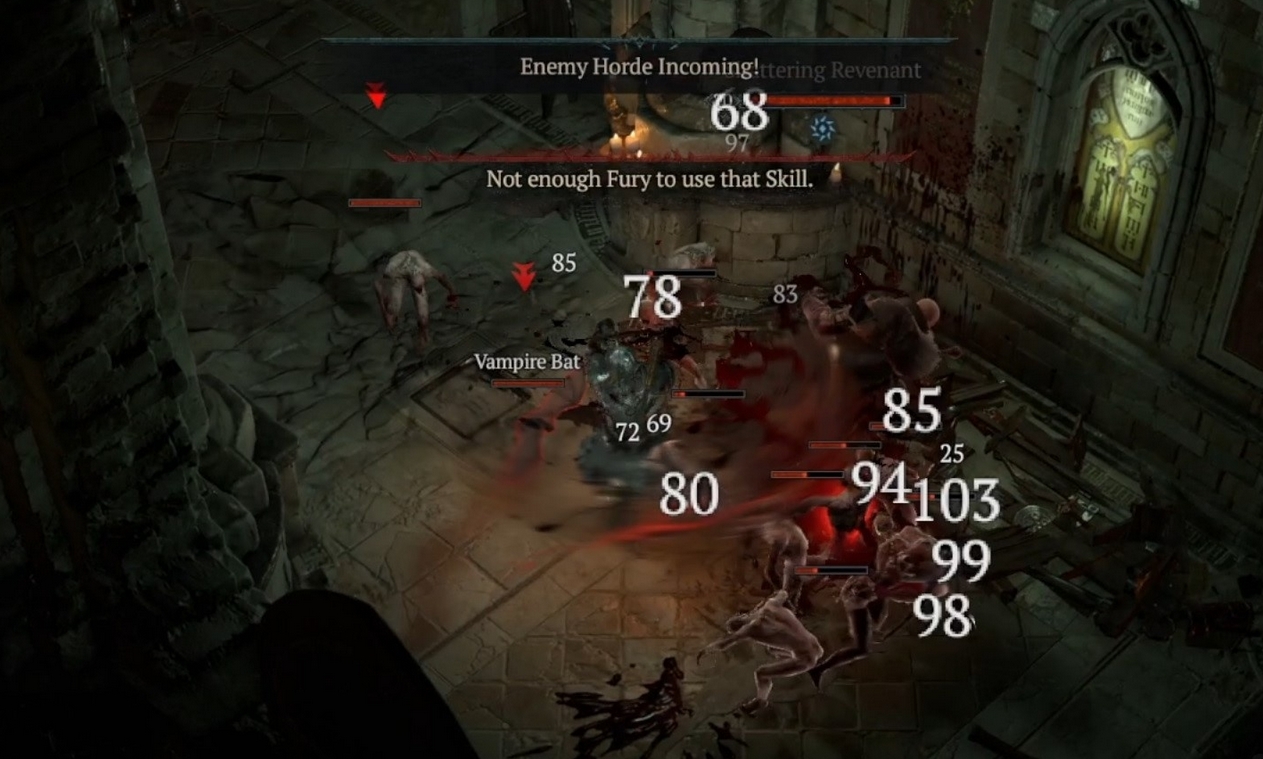Diablo 4, a game known for its intense action and immersive gameplay, faces a critical challenge: maintaining readability and player engagement in its high-paced environment. As players delve deeper into the game, particularly in the Tower of the Ancients (AoZ), certain design elements appear misaligned with the game’s core mechanics, impacting the overall experience.

The Core Issue: Readability in High-Intensity Situations
Original Game Vision vs. Current Gameplay
The original concept of Diablo 4 seemed to focus on slower-paced, methodical gameplay, where positioning and timing were crucial. However, as the game evolved, possibly due to player feedback, the pace increased significantly. This shift becomes evident, especially in AoZ, where the screen is often overcrowded with monsters, obscuring the player’s character and vital game information.
The Buff Bar Bloat
One of the critical issues is the reliance on the buff bar to track important gameplay elements, like weapon swaps for an Overpower Barbarian or counting Dark Shroud balls for a Rogue. This reliance becomes problematic in intense battles where the character is hidden under many enemies, pushing the limits of the buff bar’s visibility.
Difficulty in Identifying Hard-Hitting Attacks
In scenarios with numerous enemies, reacting to hard-hitting attacks or special animations from various monster types is challenging. These attacks, designed to be dodged or countered, often get lost in the chaos, leading to unexpected player deaths and frustration. Players seek solutions through strategic acquisitions, aiming to buy D4 items that enhance their character’s survivability amidst such chaotic encounters.
Ground Effects and Explosions
Another major readability issue arises from ground effects like poison puddles, lightning pillars, and on-death explosions. These hazards are often obscured by the density of monsters on the screen, leaving players unaware of the danger until their health rapidly depletes.
Overwhelming Damage Numbers
The current system of displaying damage numbers adds to the clutter, covering crucial visual cues. While these numbers are essential for understanding gameplay dynamics, their omnipresence detracts from the player’s ability to navigate the battlefield effectively.
The Rogue Class: A Beacon of Fun in Chaos
Interestingly, the Rogue class is a fan favorite in these chaotic scenarios. Their ability to maneuver around the outskirts of battles and avoid many readability issues highlights the disparity in-class experiences and points towards a need for broader design adjustments.
Balancing Evolution with Fundamentals
Addressing Misalignment in Game Evolution
While player feedback has driven Diablo 4 to evolve, certain aspects have advanced too rapidly, misaligning the game’s fundamental design principles. This misalignment is most noticeable in high-challenge areas like AoZ, where the game’s mechanics struggle to keep pace with the demands of intense combat.
The Need for a Holistic Approach
A more holistic approach to game design is necessary to address these issues. Balancing the need for intense, action-packed gameplay with clear, readable visuals and mechanics is key to providing a satisfying experience for all players, regardless of their chosen class or playstyle.
Future Prospects
Diablo 4 needs to consider these readability and gameplay balance issues carefully. Addressing the buff bar’s limitations, re-evaluating the presentation of crucial game information, and ensuring that all classes can navigate high-intensity situations effectively are steps towards a more cohesive and enjoyable game experience.
Conclusion
As Diablo 4 evolves, the game’s development team must take a step back to reassess how player feedback and game design changes impact the core gameplay experience. Diablo 4 can provide an engaging and rewarding experience for players across all levels of challenge by focusing on readability and balancing the pace of gameplay with clear visual cues.
